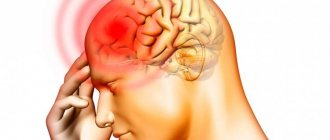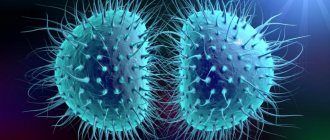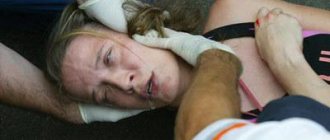Meningitis is caused by a variety of microorganisms, including bacteria, fungi and viruses. Meningococcal meningitis is a bacterial form of meningitis, a serious infection that affects the lining of the brain. It can cause severe brain damage and, if left untreated, is fatal in 50% of cases. The bacterium Neisseria meningitidis, which causes meningococcal meningitis, is especially dangerous due to its ability to provoke large-scale epidemics. Twelve serogroups of N. meningitidis have been identified, 6 of which (A, B, C, W, X and Y) can cause epidemics. The incidence of meningococcal meningitis varies from sporadic cases and small clusters to large epidemics worldwide, with seasonal variations. Anyone of any age can get the disease, but the disease mainly affects infants, preschool children and young adults. Geographic distribution and epidemic potential vary depending on the serogroup. There are no reliable data on the burden of meningococcal meningitis worldwide due to the lack of adequate monitoring in some areas. The heaviest burden of meningococcal disease is found in areas of sub-Saharan Africa known as the “meningitis belt,” stretching from Senegal in the west to Ethiopia in the east (26 countries). During the dry season between December and June, dust-carrying winds, cold nights and upper respiratory tract infections damage the lining of the nasopharynx, increasing the risk of meningococcal infection. In addition, cramped living conditions may contribute to the transmission of N. meningitidis. This combination of factors explains why large epidemics occur in the meningitis belt during the dry season.
Routes of infection
Entoroviruses are pathogenic microorganisms that are highly resistant to environmental influences and can exist in it for more than a day. They can settle on household items and products, or rise into the air along with dust.
They can enter the body through the respiratory tract or oral cavity along with food. Talking to a sick person or eating raw and dirty food can cause serous meningitis in children.
In addition, this type of virus can easily exist in aquatic environments. Therefore, infection can occur if a child drinks tap water or swims in open bodies of water where there are large crowds of people (ponds, swimming pools, etc.).
Another feature of these viruses is that they have a long incubation period and the carrier of the infection can be a completely healthy-looking person who is not even aware of his illness. Together with saliva during conversation, the virus is transmitted from a sick person to a healthy one.
So, based on all of the above, we can conclude that serous meningitis has three routes of transmission. This:
- airborne;
- contact;
- water.
Enteroviruses often enter the human body. But not everyone experiences their further development. It depends on the person's immunity. If it is weakened and cannot independently fight pathogenic microorganisms, then the risk of infection and the development of serous meningitis is very high.
What is the danger of Quincke's edema? Find out in this article. What is mumps? Symptoms and treatment of the disease.
Treatment of vegetative-vascular dystonia in children - https://klubmama.ru/zdorove/detskie-bolezni/vegetososudistaya-distoniya.html
Pathogenesis of the disorder
The “entry gate” for infection is the mucous membranes of the nasopharynx.
Some bacteria can persist in the epithelium of the nasopharynx, which subsequently becomes asymptomatic in healthy people. In rare cases, inflammation of the mucous membrane of the upper respiratory tract may occur, leading to nasopharyngitis. From the mucous membrane of the nasopharynx, the causative agent of meningitis penetrates further into the blood and cerebrospinal fluid at certain stages; this occurs through transmittance, which fights against phagocytosis and antibodies.
Capsular polysaccharides of meningococcus belong to heterogeneous antigens found in various serotypes - A, B, C, D, X, Y, Z, 29 E, W135. Differences can be found in the chemical composition.
For example, serotype C and A are found in Africa and cause epidemics; serotype Y can cause an epidemic of pneumonia. In our country, the most common serotype is B, which causes sporadic cases, and serotype C, but, unfortunately, it has not yet been possible to find and prepare a vaccine against them.
In isolated meningococcus, the serotype, subtype and immunotype can be determined. Isolated serotypes are sensitive to penicillin, but this is a temporary statement, because serotypes of meningitis in the world are already resistant to this substance.
The highest mortality rate was recorded during the 1st year of life and during pneumococcal infection. In neonates, mortality is high and survivors have significant long-term consequences.
An interesting “gender bias” of certain pathogens is pointed out - boys have a higher incidence of gram-negative meningitis, and listeria infection is more common in girls. GBS affects both sexes equally often.
Can adults get serous meningitis?
Only those babies who are breastfed are insured against serous meningitis, since along with milk they receive antibodies that protect their body from viruses and bacteria. But starting from 1–2 years, the immune system begins to decline and the child’s body becomes susceptible to invasion by pathogenic microorganisms.
In school-age children, serous meningitis is diagnosed less frequently than in preschool children. In adults, this disease is extremely rare, since their body has already developed immunity to enteroviruses and is able to independently suppress their activity.
Fungal form
The fungus Cryptococcus neoformans is the causative agent of cryptococcal meningitis. In people with normal immunity, carriage of this infection does not cause problems. However, in patients with HIV or AIDS, the fungus causes inflammation of the meningeal membranes.
The disease is acute with pinpoint hemorrhages in the hard and soft membranes, and cerebral edema. Inflammation spreads to the brain stem and base. These departments are responsible for vital processes. Often ends in death.
Incubation period
Enteroviruses do not immediately begin their active activity after entering the body. They need time to adapt and reproduce. And the duration of this incubation period is different in each case, and it depends on the type of pathogen.
The average incubation period is four to ten days.
And then the presence of enteroviruses in the body makes itself felt. Moreover, their manifestation begins unexpectedly and has a pronounced symptomatic picture. Serous meningitis develops very quickly and in an acute form.
Otogenic nature of inflammation
When infection penetrates from the middle ear into the meninges, otogenic meningitis develops. The disease occurs against the background of acute or chronic otitis media. The causative agent is usually streptococcus or staphylococcus. The pathology is accompanied by characteristic symptoms with the occurrence of intoxication and damage to the nervous system.
You should pay attention to changes in the nature of headaches with the development of meningitis. Local pain in the area of the affected ear becomes diffuse, intense, radiating down the spine.
Clinical picture
The clinical manifestation of serous meningitis also has its own characteristics. If infection occurs through the respiratory tract, then the child may exhibit all the signs of an acute respiratory infection. These are nasal congestion, cough, malaise, etc.
And if the virus enters the body with food or liquid, then disorders of the digestive system are noted. The child develops severe abdominal pain, begins to experience repeated diarrhea, as well as vomiting, nausea and bloating.
But regardless of the route of infection, serous meningitis has a general clinical picture, which includes:
- temperature over 38 C;
- headache;
- weakness;
- fear of light;
- muscle pain;
- spasms of the lower and upper extremities;
- increased intracranial pressure;
- stiff neck.
There are also other manifestations of serous meningitis associated with severe muscle tension. As a rule, a sick child's head is always slightly tilted back, and his muscles can spontaneously contract. You can check this in a simple way - put the child on his back, press on his pubic symphysis and you will notice how the legs themselves begin to bend at the knee and hip joints.
You can take small children under the armpits and lift them up - with serous meningitis, the legs will also begin to bend and press against the stomach.
Body temperature is mainly observed for the first few days, then its decline is diagnosed. The manifestation of other symptoms may last up to 10 days. This does not mean that treatment of serous meningitis can be avoided, since if the disease is severe, severe damage to the brain and central nervous system is possible, as a result of which the child may remain disabled for life.
And besides, such diseases, as a rule, do not go away without leaving a trace. Complications occur in almost 70% of cases. And if treatment was completely absent or carried out incorrectly, then there is a high risk of:
- decreased hearing and vision, up to complete deafness and blindness;
- development of mental retardation;
- development of musculoskeletal disorders;
- development of paralysis;
- development of epileptic seizures.
And this greatly affects the child’s quality of life and requires constant monitoring by doctors and the use of special medications that can affect the functionality of other internal organs.
Diagnostics and complex of therapeutic measures
It is necessary that diagnosis be carried out as soon as possible after the onset of the disease. Timely medical intervention can significantly improve the patient's prognosis and save his life.
The standard examination to confirm meningitis is to assess the patient's neck freedom of movement and perform a spinal tap. During a spinal tap, the doctor removes fluid from the area around the 4th and 5th vertebrae. If the fluid is clear, this means that the patient is most likely healthy.
If the collected cerebrospinal fluid is cloudy, there is a possibility of infectious meningitis. To complete the diagnosis, the sample is sent to the laboratory for examination.
Immediately after diagnosis, treatment must begin. With this disease, even a minute can save a life. Because a patient with infectious meningitis is primarily susceptible to swelling of the brain, he is given anti-swelling medications.
Other important drugs are antibiotics, which kill a wide range of bacteria and have the ability to penetrate well into the brain. Antibiotics can be given orally or intravenously.
In addition, it is necessary that the patient has an adequate supply of water and minerals. During treatment, spinal taps are performed repeatedly at 48-hour intervals and the contents of the cerebrospinal fluid are analyzed.
A life-threatening patient is kept in intensive care so doctors can monitor his vital organs. With successful treatment, the main symptoms subside after approximately 4 days.
However, antibiotics must be continued for at least 2 weeks to prevent recurrence of the disease.
What should you do if your child shows symptoms of serous meningitis?
If you observe symptoms in your child that are similar to those of serous meningitis, immediately show him to a specialist. If your fears are confirmed, the child will be immediately hospitalized in the infectious diseases department.
Serous meningitis is not treated on an outpatient basis, since this disease most often occurs in an acute form and can lead to a sharp deterioration in well-being. Therefore, the child must be under constant supervision of medical personnel.
Treatment of serous meningitis is carried out differently in each case. This depends on the type of pathogen and the course of the disease itself, as well as the symptoms that accompany it. So, if the causative agents are viruses, then antiviral drugs are prescribed, if bacteria are antibiotics.
Further treatment is determined based on the patient’s well-being. Degradation may be prescribed, which helps eliminate headaches, diuretics, antipyretic drugs, as well as drugs to get rid of seizures.
Immunostimulating therapy is also carried out, which helps to increase the body’s natural defenses and speedy recovery.
An important factor in the treatment of serous meningitis is adherence to the pastel regime, lack of stress and a gentle diet.
After successful treatment, the child needs rehabilitation. It is carried out in special rehabilitation centers, sanatoriums and dispensaries. Various therapeutic measures are carried out here with the participation of specialists who help quickly and effectively eliminate the consequences of the disease, which occur very often.
And after completing the rehabilitation period, the child should be observed by a neurologist for 5–6 years. At first, visits to the doctor should occur every 3 months, and then every six months. If there are positive dynamics, visits to the doctor may be reduced to once a year.
What is neurodermatitis, and how is this disease treated in children? How to treat a severe barking cough in a child? Read in this article.
Features of the treatment of dry cough in children - https://klubmama.ru/zdorove/detskie-bolezni/suxoj-kashel-u-rebenka-lechenie-sovremennymi-metodami.html
Complications of an infectious disorder
The most serious consequence, which does not occur very often, is death.
It is observed in 5-10% of cases, usually within 1-2 days after the onset of the disease. Another complication that occurs with this disease is damage to the cranial nerves. The most common is a disorder of the auditory nerve, which is usually irreversible and leads to complete deafness in the patient.
Less commonly, damage to the optic nerve occurs, which can also cause permanent damage. Another possible complication, no less serious, is inflammation of the heart muscle.
On the body, where a bluish rash forms during illness, so-called necrosis may develop - dead tissue, which later divides. In children, meningitis can also lead to behavioral problems, epilepsy, or mild developmental delays.
From a prognosis point of view, prolonged convulsions are unfavorable, especially if they last longer than the 4th day of hospitalization. On the other hand, seizures occurring during the first 3 days of hospitalization are not prognostically significant.
Only 6% of patients may experience signs of DIC or endotoxin shock. The prognosis for these patients is much worse.
What consequences may occur after treatment of serous meningitis?
Serous meningitis affects an important organ – the brain. Accordingly, the central nervous system suffers because of this. If the disease is treated in a timely manner, the consequences occur rarely and do not have a pronounced picture.
But if treatment was delayed or not performed at all, then the following complications are possible:
- deafness;
- blindness;
- speech disorder;
- delayed psychotropic development;
- dysfunction of the musculoskeletal system;
- epilepsy.
To prevent such consequences, it is necessary to approach the treatment of serous meningitis in children with great responsibility. You must adhere to all doctor's recommendations, and also observe strict bed rest.
Bacterial species
Bacterial meningitis can be primary or secondary. The primary types of meningitis include:
- meningococcal;
- hemophilic;
- pneumococcal.
In cases where the underlying disease is complicated by inflammation of the lining of the brain, meningitis is classified as a secondary form. The main routes of infection are hematogenous, lymphogenous, contact, and post-traumatic.
Meningococcal infection
The main source of bacterial primary meningitis is meningococcus of the genus Neisseria. The pathogen quickly loses its ability to reproduce at temperatures below 350C. There are several types of meningococci. Outbreaks of the disease are caused by types B and C, isolated cases occur when infected with meningococci types A, B, C, Y.
Pneumococcus as a cause
Pneumococcus ranks second in isolated cases of infection. This type of disease is characterized by a severe course with multiple complications. In most cases it ends in death. The causative agent of the disease is Streptococcus pneumoniae.
Tuberculosis infection
Tuberculous meningitis develops when Mycobacterium tuberculosis penetrates the blood-brain barrier. The main method of infection is hematogenous or lymphogenous. It occurs secondarily as a complication of tuberculosis of the lungs and urinary system. Sometimes the pathology develops with tuberculosis of the bones of the skull or spinal column.
Staphylococcal pathogen
You can get staphylococcal meningitis in cases of infection with bacteria St. aureus, St. epidermidis. The infection is sensitive to heat and the action of pure alcohol, and under the influence of disinfectants it quickly dies. Usually develops as a secondary form. The risk group includes people who have a history of:
- traumatic brain injuries;
- drug addiction;
- brain surgery;
- bacterial sinusitis;
- liquorrhea (cerebrospinal fluid leak);
- purulent melting of bone (osteomyelitis).
People who are forced to frequently take injections and undergo hemodialysis are at risk. Meningitis can develop against the background of prolonged artificial ventilation and improper care of the catheters of the main vessels.
Purulent nature of the inflammatory process
With the purulent nature of meningitis, neutrophils predominate in the cellular composition of the cerebrospinal fluid. The diagnosis of purulent inflammation is almost always made with a bacterial form of the disease. In rare cases, a purulent process occurs due to a protozoal or parasitic infection.
How to prevent the development of serous meningitis?
Every person knows that prevention is better than cure. The development of serous meningitis can also be prevented by:
- drink only boiled or filtered water;
- eat foods that have been subjected to heat treatment;
- Wash your hands before each meal, after visiting the toilet and going outside;
- avoid crowded places;
- avoid swimming in open waters;
- engage in physical exercise.
Only by following these recommendations can you protect your child from serous meningitis. And remember, never self-medicate, but immediately show your child to a specialist as soon as the disease begins to show the first signs.
Vaccination and a set of preventive measures
The most effective protection against meningitis A and C is vaccination. It is able to protect the body for several years.
Vaccination against meningitis is particularly recommended for young people, as they are at greatest risk of the disease.
There is also a vaccine against the bacterium that causes bacterial meningitis (Hemophilem influenzae). Unfortunately, an effective vaccine against meningitis C has not yet been developed.
A good way to prevent infection is a healthy lifestyle. Because a weakened immune system allows disease-causing germs to penetrate the brain membranes and cause inflammation, maintaining a good supply of vitamins, maintaining good eating habits, engaging in regular outdoor exercise, paying attention to quality sleep, and avoiding meningitis is also important to prevent meningitis. stressful situations.
Smoking, even passive smoking, can also increase the risk of infection. A national study found that children under 15 years of age with one parent who smokes are 3 times more likely to develop meningitis than children from nonsmoking families. If both parents are smokers, the risk increases 8 times.
Pneumococcal infection
Pneumococcal meningitis is a purulent leptomeningitis. The causative agent of the disease is pneumococcus. Occurs mainly in children after 10 years of age.
This type of disease is quite common and comes immediately after meningococcal infection. Pneumococcal meningitis first became known in the 19th century. During these years it became known that the bacterium causing the disease was aerobic. It is immobile, protected by an outer capsule and represents the streptococcus family.
Pneumococcal meningitis occurs as a result of bacteria entering the body through airborne droplets. It can be transmitted by both sick and healthy people who are carriers of the infection. You are more likely to catch the disease in the fall and spring.
Prevention
Nonspecific
Nonspecific prevention consists of complete and timely treatment of infections . Children are hardened, accustomed to observing personal hygiene standards and drinking regime. The child washes his hands before eating, after coming from the street, after petting a pet. When washing hands, use antibacterial soap. Only boiled water is drunk.
Specific
An effective preventive method is vaccination . But parents are often against vaccinations. The decision is theirs, taking into account the child’s health status, living conditions, as well as other factors:
If one of the parents has had meningococcal meningitis, vaccination is necessary.
- All children should be vaccinated against Haemophilus influenzae. Such vaccination prevents the formation of not only meningitis, but also other respiratory diseases.
- The effectiveness of vaccination is high - from 95 to 100%, well tolerated.
- When traveling to endemic areas (meningitis belts) - African countries and Canada, vaccination is required.
- There is no more reliable way to prevent meningitis today, only vaccination.
There is an opinion that vaccination weakens the immunity of children - this is a myth . But it is true that without vaccination a child remains defenseless against a dangerous disease.
Chemoprophylaxis
Chemoprophylaxis is carried out with family members of the sick child who live with him. Preventive measures are taken for people who had contact with a sick child less than a week before the onset of the disease. If contacts were more than 4 hours every day.
- The child himself is also subject to prophylaxis before he is discharged from the hospital (provided that the child was treated with penicillin G).
- A prophylactic agent is rifampicin. Ciprofloxacin and Ceftriaxone should not be given to children; such medications are intended only for adults.
Meningococcal infection
The meningococcal species is a common representative of the generalized form of this disease. This type of leptomeningitis occurs due to meningococcus entering the body. It has an extremely acute onset of the course and manifests itself in the form of meningeal symptoms, which are accompanied by signs of intoxication.
Meningococcus is immobile and dies extremely quickly in the external environment. It is aerobic and susceptible to cold, heat and sunlight. This bacterium is protected by a special capsule, which allows it to survive external stimuli and is destroyed after entering a favorable environment (the human body). This type of meningitis has an acute course due to the endotoxin produced by the causative agent of the disease. It is similar to the toxins synthesized by enterobacteria, but is significantly stronger than them.
You can catch meningococcal meningitis through airborne droplets. This often happens during a conversation or when an infected person coughs and sneezes. This type of meningitis is not transmitted by contact.










